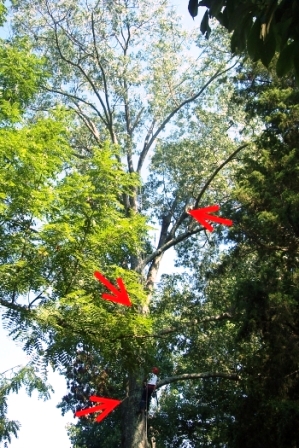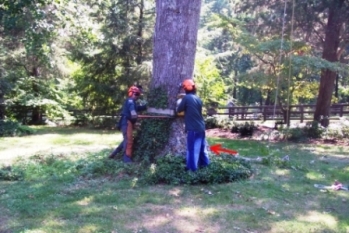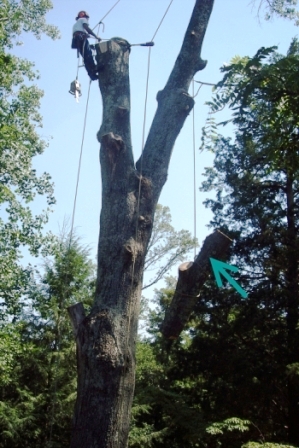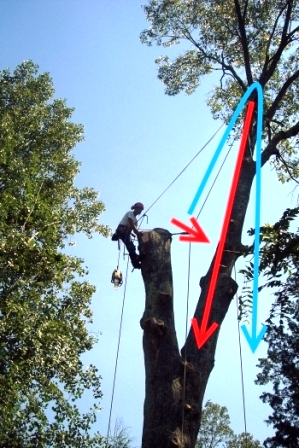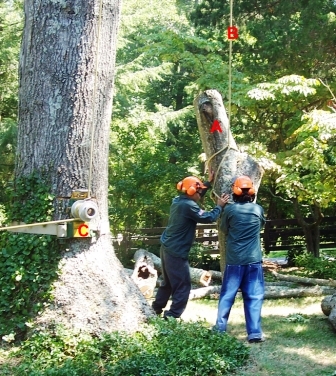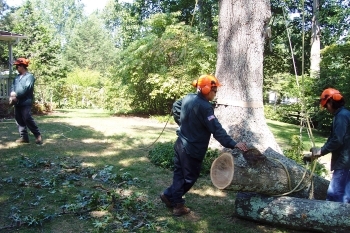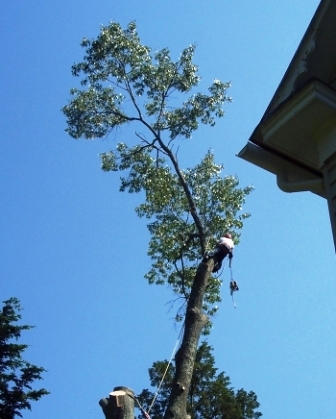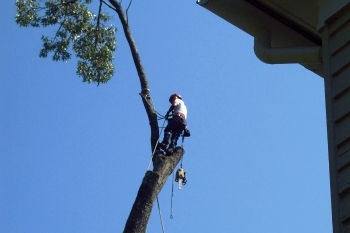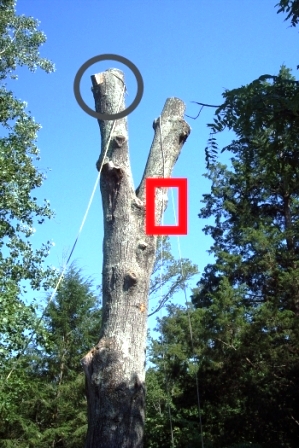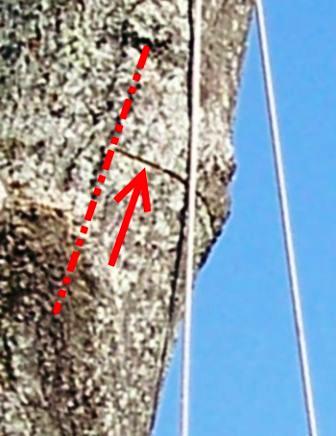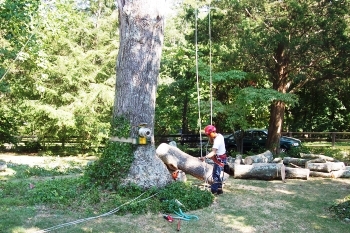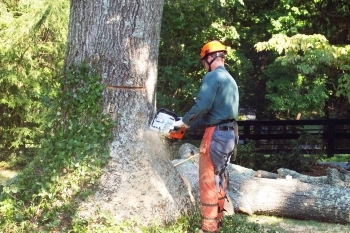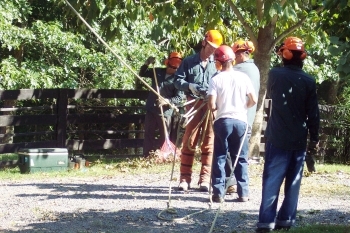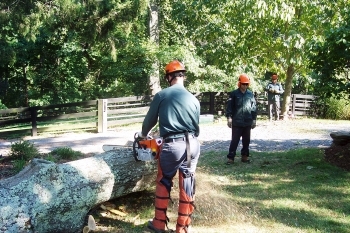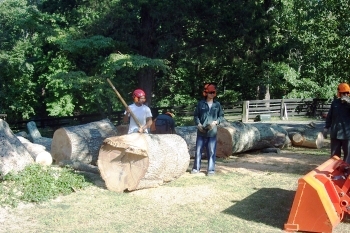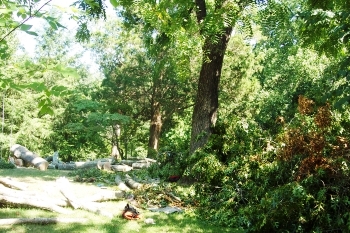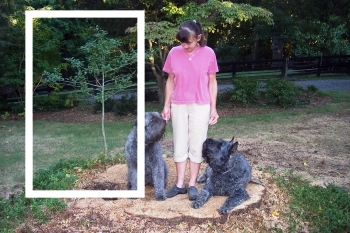Our customer for this job was kind enough to give us these photos of the removal operation that we did for him. We have known him for some time. Being a certified arborist and tree lover, he was very upset about removing this tree. We have been considering it for a few years. Unfortunately cuts that were made on the tree a very long time ago started a declining process that took many years to get to the point where safety was now a concern. Recently a large limb had fallen onto the porch of the house. The damage was relatively minor, however both he and I considered additional damages highly likely. This was a one day operation for the most part with our entire staff working on the project. The operation took 13 hours to complete and an additional 7 hours to grind the stump. There were 15 tons of wood that was placed at another location on the property. The majority of our removal operations occur in much the same manner as this one. The roping and lowering of limbs and wood puts a degree of safety in our work. This is by no means a complicated removal, merely a large one. Our rigging skills are highly refined and constantly being modified as we learn different things from the situations that we encounter. After 10 years in business, we have seen nearly every type of difficult job. Our rigging skills have largely replaced crane use although certain situations still require a crane.
|
|
- Photo was taken from the Northwest side of the tree
- Red arrows on the left photo indicate locations where major limbs were removed by the wind
- Arrow on the right is pointing to indications of stump decay
- Notice that the crown is still large and green (looks healthy)
|
|
|
- The blue arrow in the left picture is pointing to the load of about 800 lbs
- The blue arrow in the right picture is the load bearing line
- The red arrows indicate the load vectors in the lowering system
- Understanding these vectors and making certain that their relationship to tree structure is highly important for safety
- Where possible, the load bust be compressive along the length of the limb
|
|
|
- Parts A,B and C are things that make the removal operation much safer
- Part A is the proper use of a rope to tie a heavy piece on
- Normally a marl is used to obtain better rope angle to prevent undue stress on the rope
- Part B is the rope - in this case it is a 5/8 double braided rope that has a breaking strength of 16800lbs and a working load of about 1500lbs
- Part C is a friction device - used to "absorb" the energy of the lowering operation
- It is entirely about control of gravity and physics
|
|
|
- Getting there
- One more cut left in the photo on the right
- Notice that several large limbs have been removed with one substantial limb left
- done in this manner to maintain dampening of the shock when the load starts downward
- Photo on the right is perhaps the most hazardous cut that needs to be made
|
|
|
- When the operation gets to wood that is very large and there is space to throw the log, generally it is done in this manner.
- the gray circle is where the pull rope is attached
- In order to use a rope system to lower wood, there needs to be space enough to decelerate the wood
- Critical not to STOP the piece when working with larger pieces
- This creates conditions that break rope fibers and sometimes ropes
- The red box is enlarged to show a cut that is made on the log prior to felling
- The dotted line is the area of fracture when the log strikes the ground - "absorbing" the energy of the fall and eliminating bounce of the log
|
|
|
- Omar finally gets on the ground
- climbing with spikes is very uncomfortable, especially after 6 hours
- Tim is cutting the felling cut
|
|
|
- On the left - mechanical advantage is installed in the line that will be used to pull the 35' log over
- When pulling over a log, there is almost no way that the log can go more than 5° from intended location
- The felling cut is made in a way such that the log is controlled the entire way down
|
|
|
- The hard part - moving the wood
- What a mess!!
|
|
|
- The owner and her pets standing on the stump that will be removed at a later time
- Note the american holly that was undisturbed by the removal of the tree.
- Impact of removal operations is one of our big concerns - we put allot into not disturbing things around our operation
|

